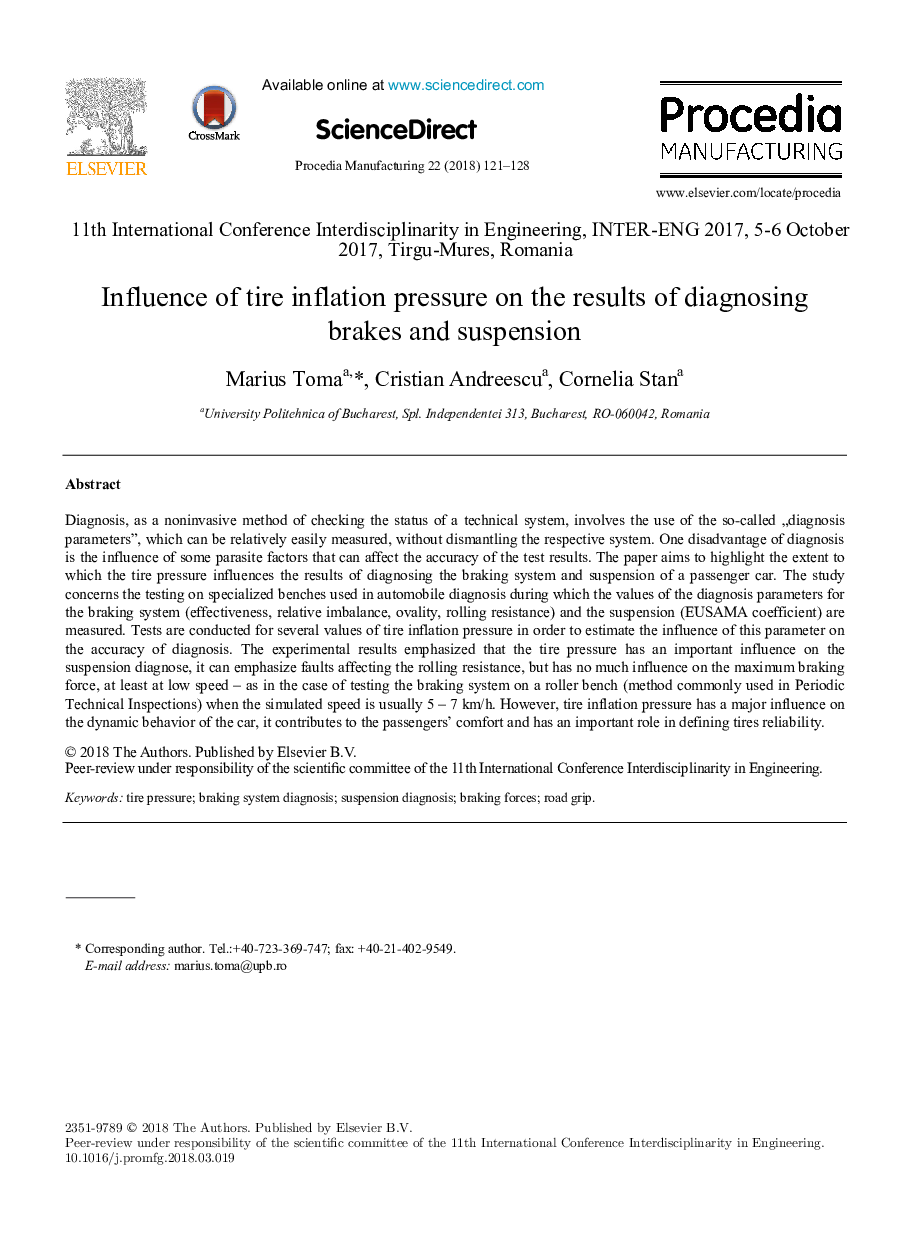| Article ID | Journal | Published Year | Pages | File Type |
|---|---|---|---|---|
| 7544839 | Procedia Manufacturing | 2018 | 8 Pages |
Abstract
Diagnosis, as a noninvasive method of checking the status of a technical system, involves the use of the so-called “diagnosis parameters”, which can be relatively easily measured, without dismantling the respective system. One disadvantage of diagnosis is the influence of some parasite factors that can affect the accuracy of the test results. The paper aims to highlight the extent to which the tire pressure influences the results of diagnosing the braking system and suspension of a passenger car. The study concerns the testing on specialized benches used in automobile diagnosis during which the values of the diagnosis parameters for the braking system (effectiveness, relative imbalance, ovality, rolling resistance) and the suspension (EUSAMA coefficient) are measured. Tests are conducted for several values of tire inflation pressure in order to estimate the influence of this parameter on the accuracy of diagnosis. The experimental results emphasized that the tire pressure has an important influence on the suspension diagnose, it can emphasize faults affecting the rolling resistance, but has no much influence on the maximum braking force, at least at low speed - as in the case of testing the braking system on a roller bench (method commonly used in Periodic Technical Inspections) when the simulated speed is usually 5 - 7 km/h. However, tire inflation pressure has a major influence on the dynamic behavior of the car, it contributes to the passengers' comfort and has an important role in defining tires reliability.
Keywords
Related Topics
Physical Sciences and Engineering
Engineering
Industrial and Manufacturing Engineering
Authors
Marius Toma, Cristian Andreescu, Cornelia Stan,
